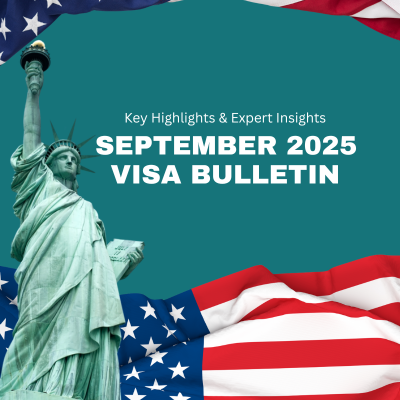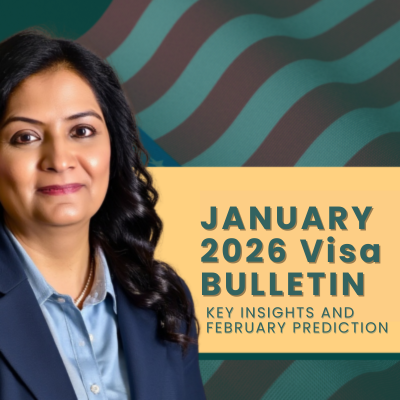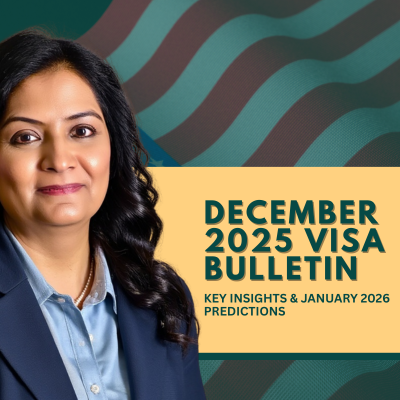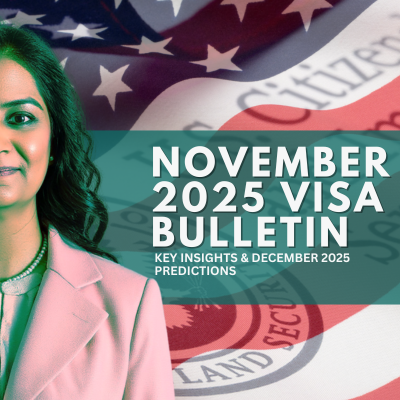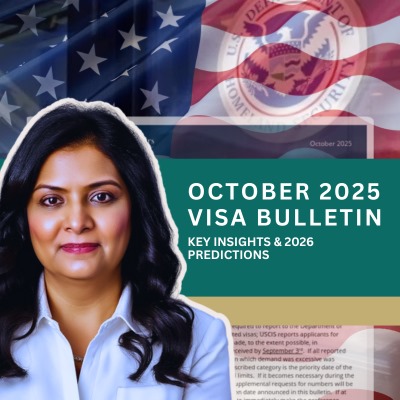As the U.S. Department of State rolls out the September 2025 Visa Bulletin, the month reveals generally static movement across most visa categories—yet a few notable forward shifts offer some momentum in the family-sponsored categories
As the U.S. Department of State rolls out the September 2025 Visa Bulletin, the month reveals generally static movement across most visa categories—yet a few notable forward shifts offer some momentum in the family-sponsored categories
Family-Sponsored Preferences: Modest Forward Movement
| Category | Chargeability | Area Movement |
|---|---|---|
| F1 | All areas | No Change |
| F2A | All areas | No Change |
| F2B | Mexico | +3 Months |
| F2B | Philippines | +16 Days |
| F2B | All others | No Change |
| F3 | Philippines | +5 Months |
| F3 | All others | No Change |
| F4 | All others | No Change |
Insights:
- The F2B category sees progress in Mexico (+3 months) and the Philippines (+16 days), offering some relief for applicants from these countries.
- F3 category advances 5 months for the Philippines, a significant movement worth noting.
- All other family-based categories remain unchanged this month.
Employment-Based Preferences: Flatline Across the Board
| Category | Chargeability | Area Movement |
|---|---|---|
| EB-1 | All chargeability areas | No Change |
| EB-2 | All areas | No Change |
| EB-3 | All areas | No Change |
| EB-4 | All areas | Unavailable |
| EB-5 | All areas | No Change |
Insights:
- All employment-based categories remain unchanged.
- The EB-4 visa remains unavailable due to quota exhaustion.
- No retrogressions are expected, but a cautious outlook is anticipated as the fiscal year closes.
Interpretation & Strategic Takeaways
- Lingering Stagnancy with a Few Glimmers of Movement
Most categories are stable, but the forward movements in F2B (Mexico & Philippines) and F3 (Philippines) reflect incremental but meaningful progress. For applicants in these queues, this could mean nearing the front of the line. - Employment-Based Paths Still Static
Employment-based categories—especially EB-1 to EB-5—show no advancements. With EB-4 still unavailable, applicants may face continued delays as the fiscal year comes to a close. - Why No Changes?
This lack of movement may signal that visa number allocation is tightening with fiscal year-end constraints. Historically, September tends to be conservative, as the DOS balances demand and final-year-end caps.
What Applicants Should Know
- If you’re in F2B for Mexico or the Philippines, or F3 for the Philippines, this bulletin brings welcome progress—please continue to track your priority dates closely.
- If you’re in EB categories, plan on continued delays. Consult your legal advisor to understand potential filing windows or anticipated retrogressions as numbers wind down.
- With the end of the fiscal year (September 30) near, expect more conservative movement or even regression in October.
Looking Ahead to October
Based on past patterns and expert projections, October could bring more shifts—mainly if unused numbers are carried over or demand fluctuates. Be prepared for updates that may include:
- Further advancements (if numbers remain available)
- Retrogressions or unavailability (if quotas are exceeded)

